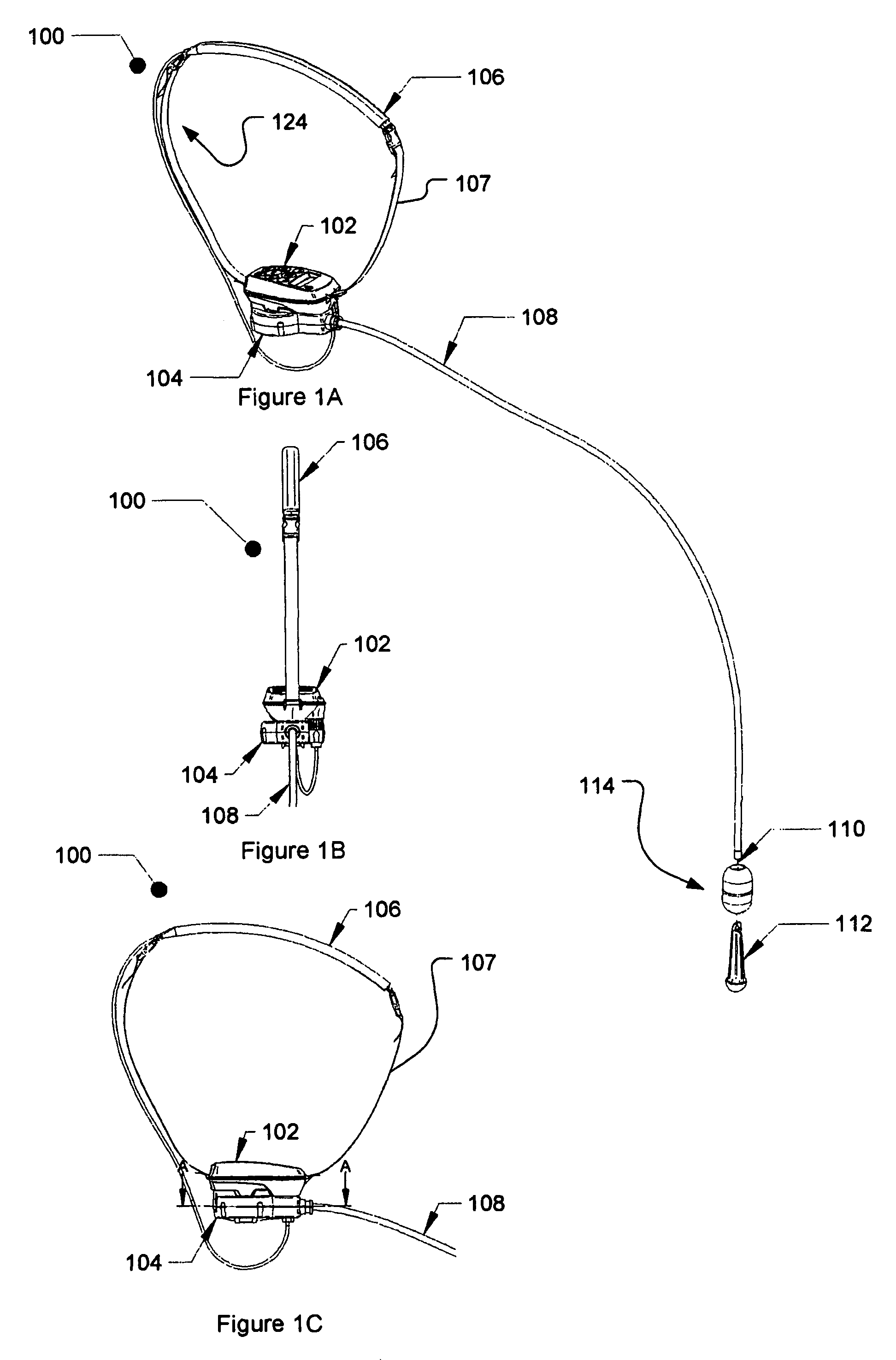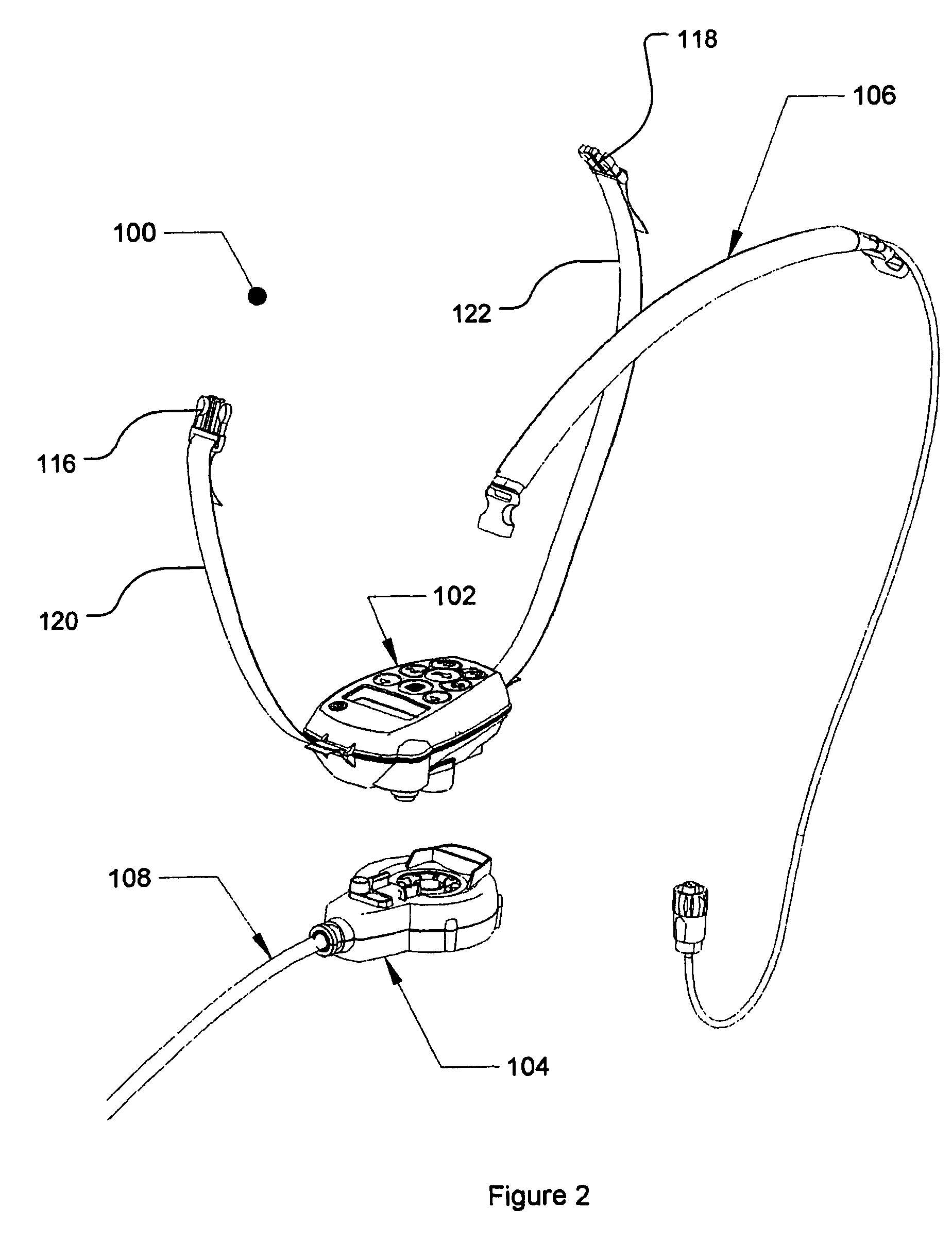Depth determination apparatus
a technology of depth determination and apparatus, which is applied in the direction of liquid/fluent solid measurement, engine lubrication, electrical/magnetic means, etc., can solve the problems of affecting the accuracy of the depth determination
- Summary
- Abstract
- Description
- Claims
- Application Information
AI Technical Summary
Benefits of technology
Problems solved by technology
Method used
Image
Examples
Embodiment Construction
[0068]The present invention relates to a depth determination apparatus which may be used in a variety of applications. One particular, though non-limiting, application, is use of the apparatus to measure the depth of holes or shafts used in drilling and blasting operations, and this specific application will be used to describe the use of the apparatus. The apparatus could, however, be used in many other operations and to measure the depth / height of many other features. By way of non-limiting examples, the invention could be used to measure the height / depth of shafts, holes, pits, fissures, caves, crevasses, chasms, buildings, escarpments, waterfalls, etc. The invention may also be used in aquatic environments, for example to determine the depth of sea or river beds where relatively precise readings are required.
[0069]FIGS. 1A, 1B and 1C respectively provide a perspective, front elevation and side elevation view of a depth determination apparatus 100 in accordance with an embodiment...
PUM
 Login to View More
Login to View More Abstract
Description
Claims
Application Information
 Login to View More
Login to View More - R&D
- Intellectual Property
- Life Sciences
- Materials
- Tech Scout
- Unparalleled Data Quality
- Higher Quality Content
- 60% Fewer Hallucinations
Browse by: Latest US Patents, China's latest patents, Technical Efficacy Thesaurus, Application Domain, Technology Topic, Popular Technical Reports.
© 2025 PatSnap. All rights reserved.Legal|Privacy policy|Modern Slavery Act Transparency Statement|Sitemap|About US| Contact US: help@patsnap.com



